Design Museum's Cycle Revolution exhibition celebrates bicycle design
A new exhibition at London's Design Museum explores contemporary bike design, from Olympic-winning sports models to compact city cycles (+ slideshow).
Named Cycle Revolution, the show explores four different categories of cycling: High Performers, Thrill Seekers, Urban Riders and Cargo Bikers.
"Bicycles are amazing because they are one of those things that every designer would like to have a go at designing, a bit like chairs or corkscrews," Design Museum director Deyan Sudjic told journalists at an introduction to the exhibition this morning.
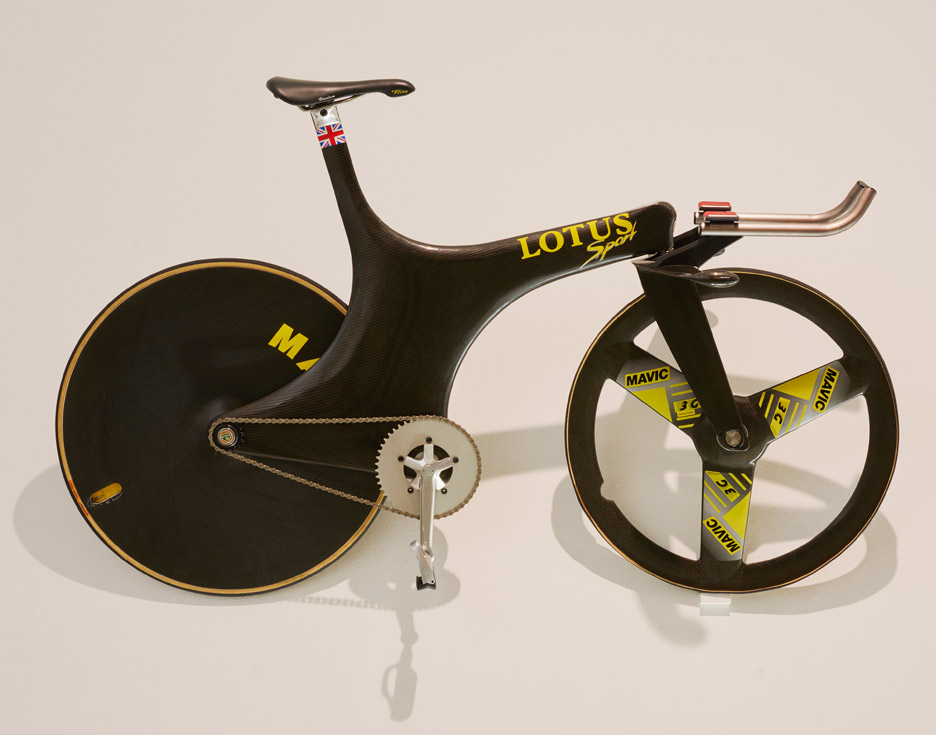
"They're one of those things which is apparently perfect but always being refined and improved and tweaked," he added. "They are of course beautiful objects, they're also about ways of life."
Among the 77 models on display are several record-breaking bikes and Olympic winners, including the Lotus Type 108 that British racing cyclist Chris Boardman rode to win gold in the 1992 Barcelona Olympic Games.
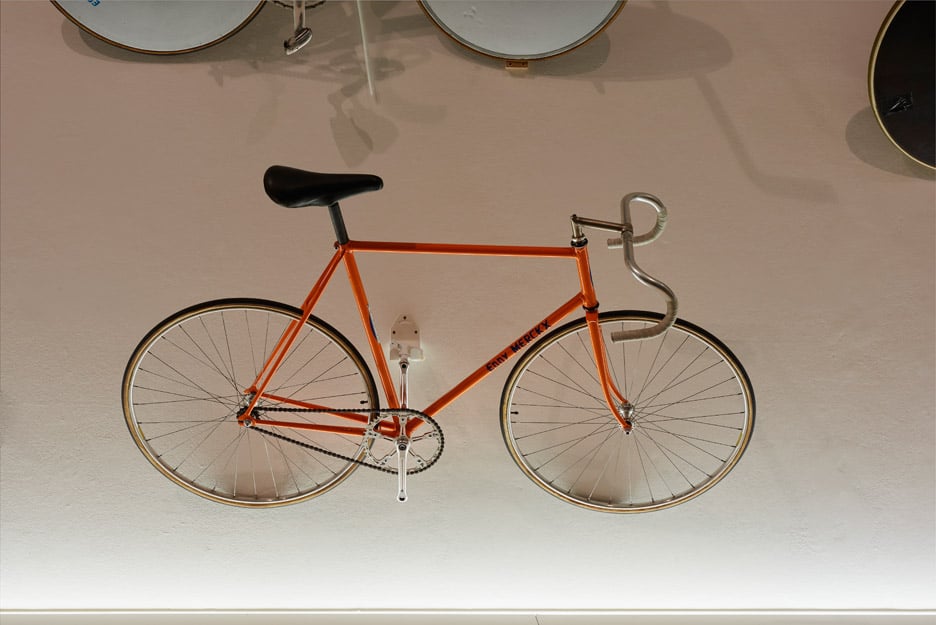
British cyclist Bradley Wiggins' 2015 carbon fibre Hour Record bike – the 3D-printed titanium handlebars of which were recently acquired by London's V&A Museum – is also shown, alongside Belgian track cyclist Eddy Merckx's 1972 Hour Record bike.
A showcase of BMX and mountain bikes is featured in the Thrill Seekers section, which includes a 1970s Raleigh Chopper, various models from Specialized and UCI BMX world champion Shanaze Reade's own bike.
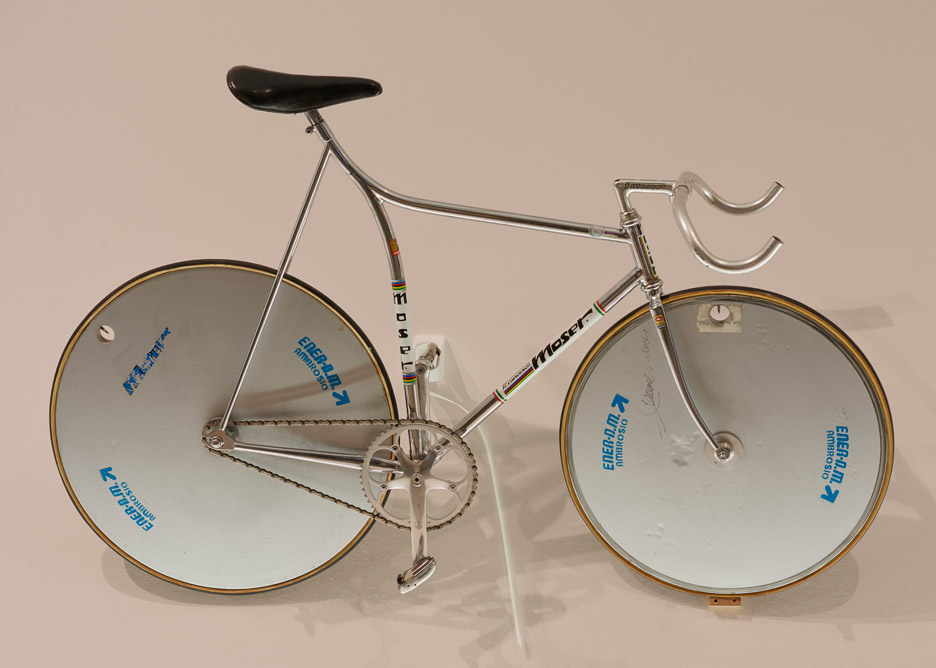
Cargo Bikers shows versions of courier bikes dating back to the 1930s as well as more bulky recent models – many of which feature front sections for carrying human or animal passengers.
Various folding cycles are also on display, including Moulton models from the 1960s and 1980s, and the earliest prototype Brompton. A nearby display shows Brompton founder Andrew Ritchie's collection of rejection letters he received in response to early requests for investment in the company.
As visitors pass through the exhibition, cycling paraphernalia is displayed in cabinets dedicated to everything from the history of the jersey – including a couple of early wool examples borrowed from fashion designer Paul Smith's collection – and a set of reflective tweed outerwear.
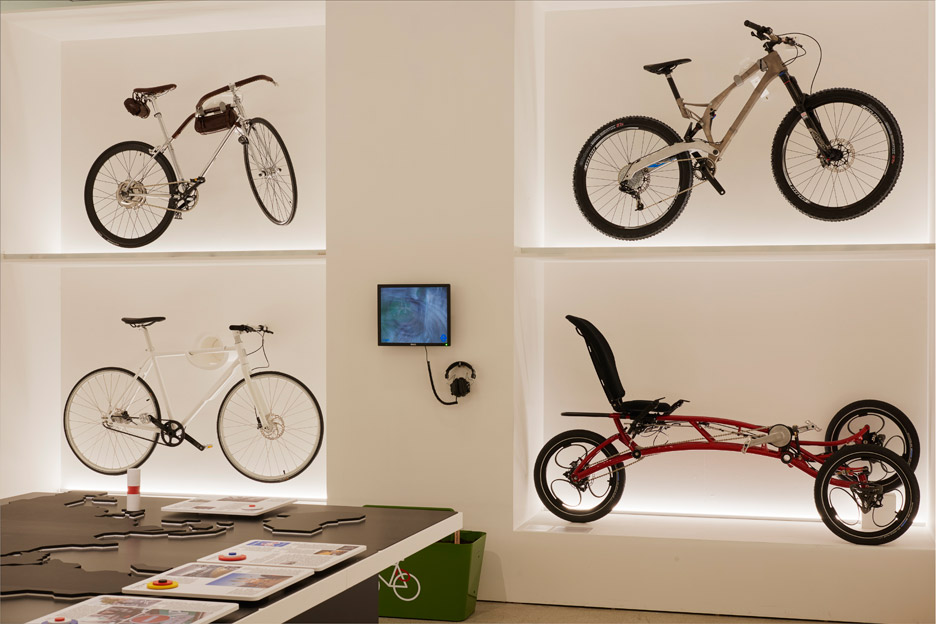
A future-focused section uncovers more unusual designs, including all-wood models, absurdly tall bikes that reference the penny farthing, and reclining bikes that require the rider to lean to steer.
Rising independent UK bike companies are also profiled, in an area that deconstructs the various stages of building a cycle.
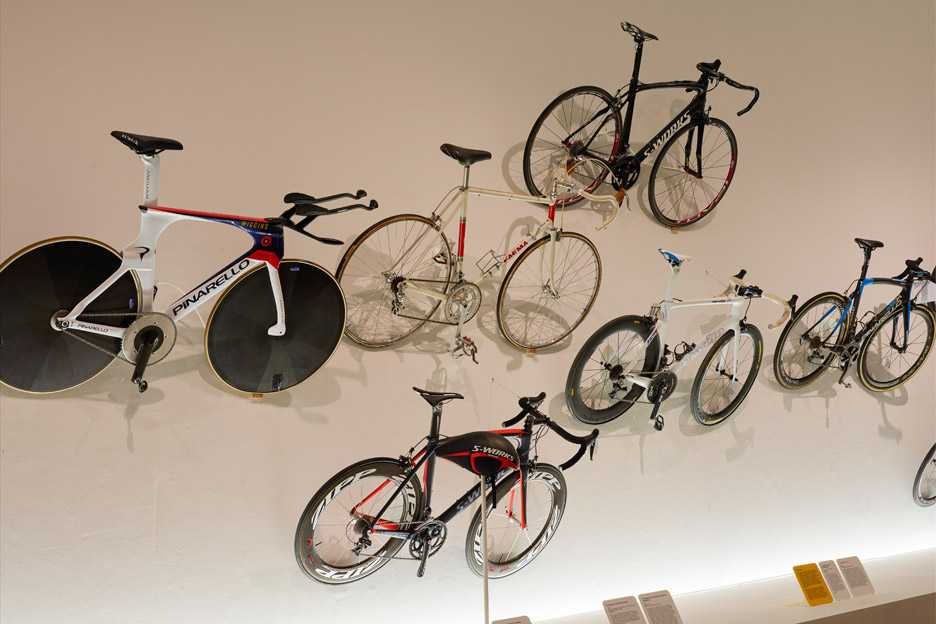
The show concludes with a film featuring figures including Paul Smith, architect Norman Foster and Peckham BMX Club founder CK Flash discussing cycling's importance in their own lives, as well as its relevance to society as a whole.
Cycle Revolution opens on 18 November and continues until 30 June 2016. It will be the museum's final show before Zaha Hadid takes over its Shad Thames building and before it moves to its new location in Kensington.
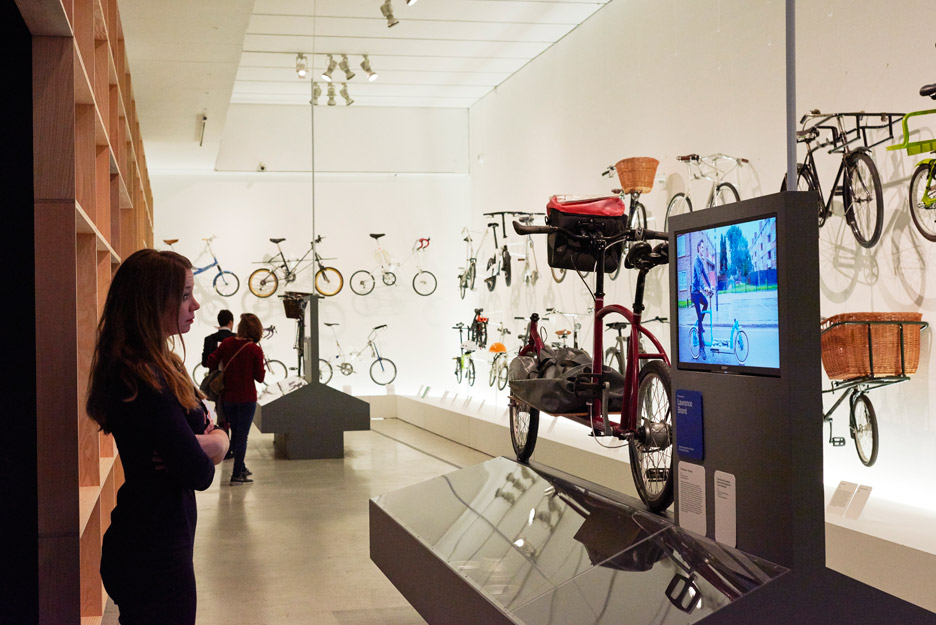
Other unusual bicycle designs unveiled recently include a folding bike that claims to be the lightest in the world, Niko Schmutz's three-piece wooden frame cycle, and "the world's lightest and most compact electric bike".
Photography is by James Harris.